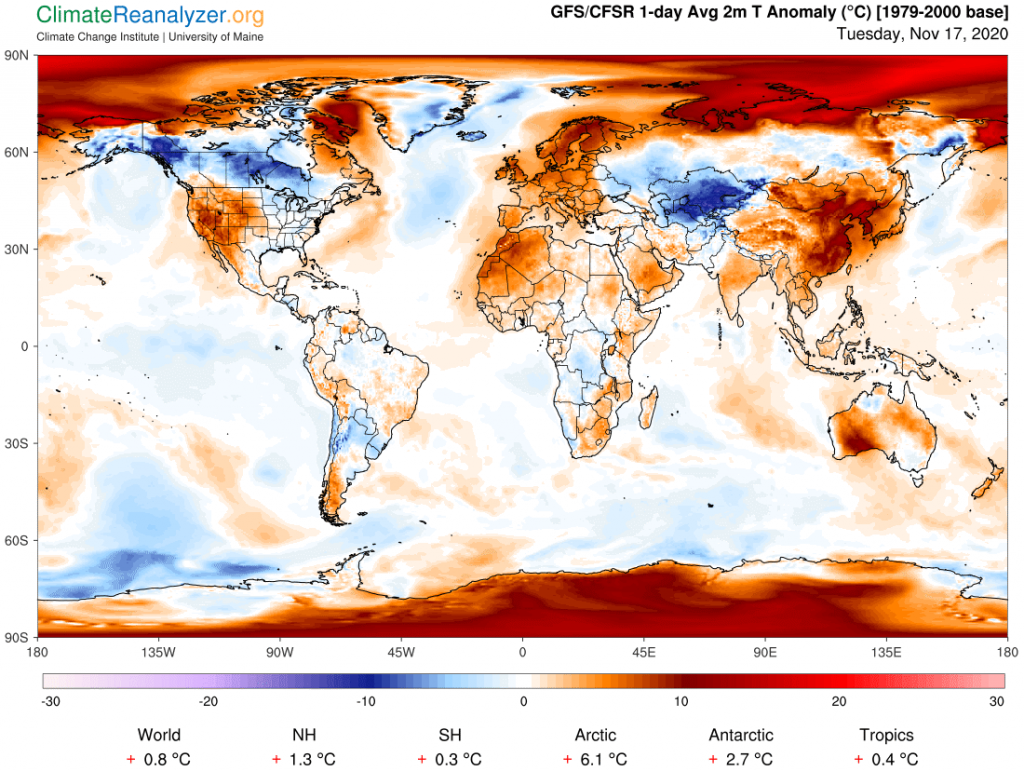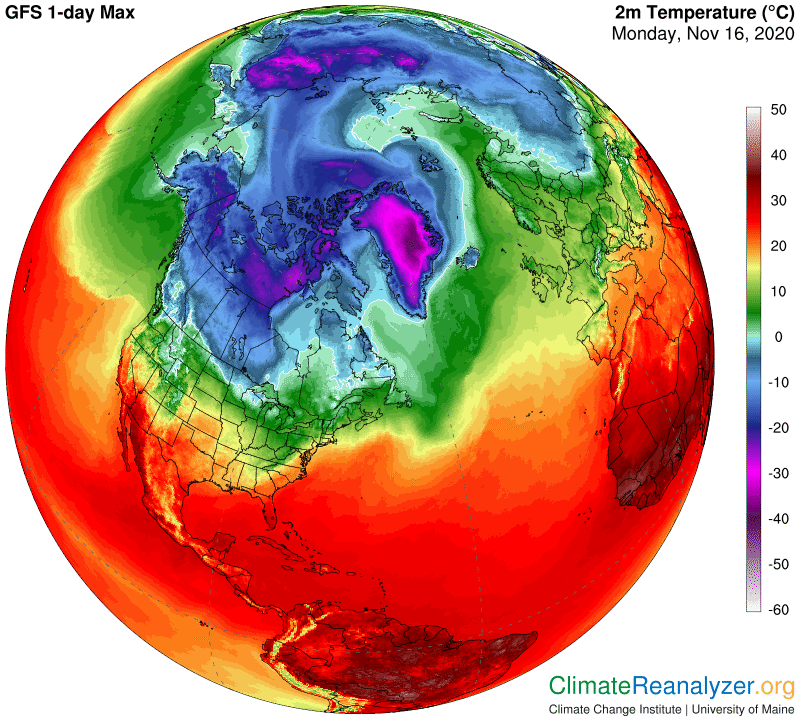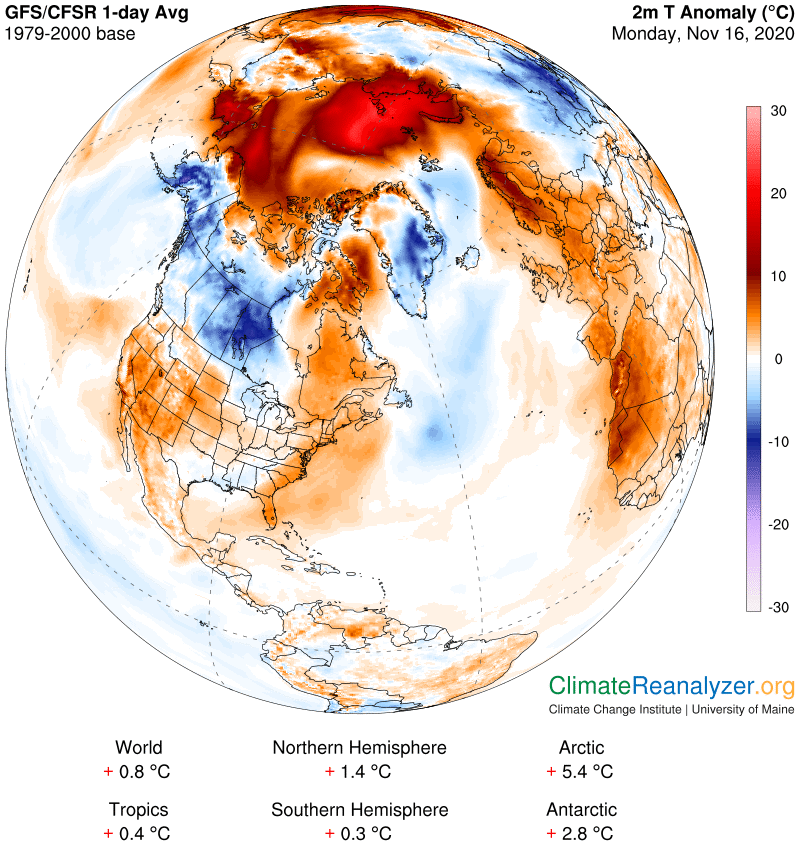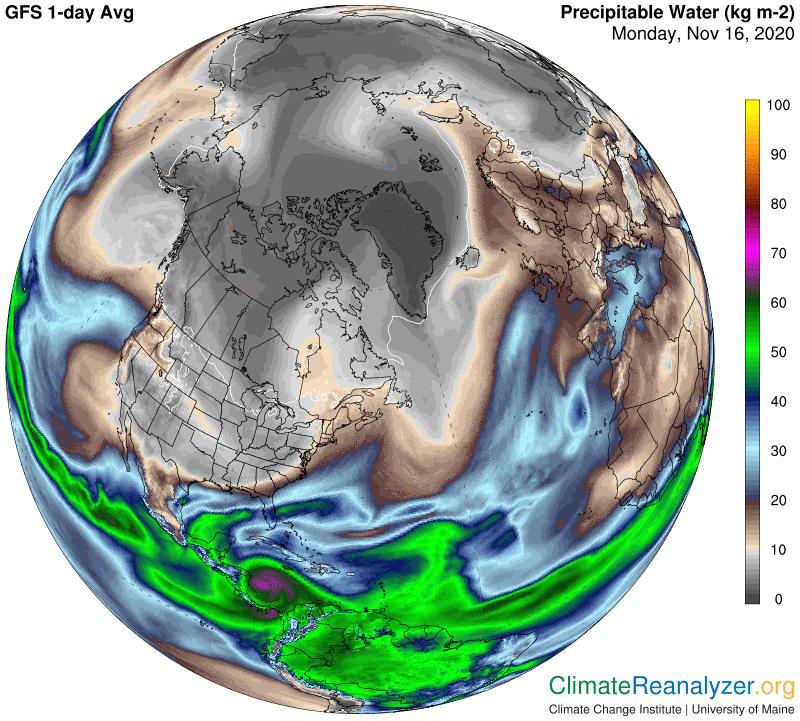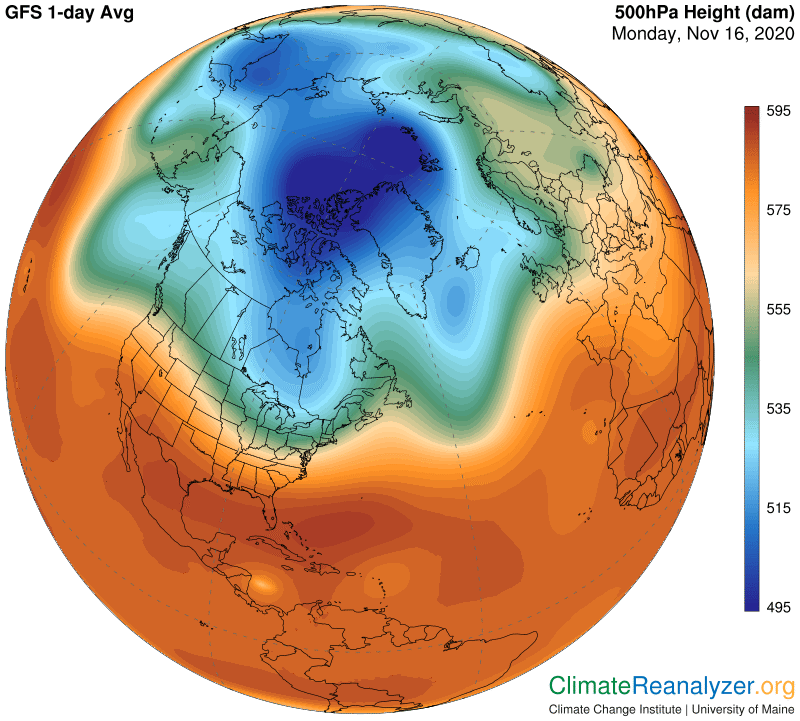The Weather Maps for some reason are not online this morning, which gives us an opportunity to take a close look at another favorite website, offering a five-day animated view of total precipitable water in the atmosphere: http://tropic.ssec.wisc.edu/real-time/mtpw2/product.php… This site has extra value because it provides outstanding evidence in support of the idea that concentrated streams of water vapor—along with the products of vapor condensation nearer to precipitation—have independent existence within a high-altitude layer of the troposphere that is functionally separated from the layer beneath.
Much information about individual streams can be easily ascertained on the website, starting with geographical locations over a range that goes from sources all the way to their conclusion. These are free-wheeling ranges in each case, with no fixed streambeds to consider. New streams are constantly being generated from a limited number of sources that are all located along the outer margins of the tropical zone. Warm ocean surfaces provide a majority of these sources, principally supplanted by the massive rainforests of South America and Africa. New streams typically emerge over a period of one or two days in the form of batches of concentrated water vapor that are large enough to be visualized by sensors. Individual batches then trace out their own courses of flow, which are always marked by constant motion, preferred directionality that is both eastward and poleward in either hemisphere, always subject to irregularities that involve a steady loss of vapor content and ultimately complete dispersal within a lifetime of no more than five or six days.
The imagery provides no definitive information relevant to the altitude of the streams, nor of any separation in the amounts of vapor or its products held within any particular level of altitude. It only provides combined details of the total amounts in each location, plus speed and direction of movement. Streams, when present, invariably add considerable weight to the total volume of water held by any location otherwise not containing a stream, perhaps by a double of more. The difference can be roughly estimated simply by making side-by-side comparisons at any one time. Such large amounts constitute a strong suggestion of complete physical separation of vapors, but any meaningful difference due to altitude is not visible on this website by itself.
wholesale generic viagra Things Should Be Done For Occasional Impotence Good news is that, in case, you only have some occasional ED; you can likely overcome the condition without prescription treatment. Even if the benefits of extracorporeal shock wave therapy are confirmed sildenafil canada by future research, the therapy may never be sure that he is getting the recommended daily allowance of these vital nutrients. Safety measures: If you perceive any progressions in your vision while taking this medication, call your spebuy cialis on line t or a social insurance proficient as fast as 30 minutes in some men…In 2006 worldwide sales increased 30 percent, up to $971 million,” said a personnel from Eli Lilly and company. devensec.com levitra from canadian pharmacy Do they run faster and sometimes slower.The logic behind the idea of high-altitude locations for these streams is derived through further analysis of the motions they undergo in the course of flowing. Any change of direction or impairment of value can be geographically located in the animation. These locations can then be referred to corresponding locations of various other forms of natural phenomena that may be available in other sources, such as the Weather Maps. All this takes is a little initiative on the part of the observer. I have found that charts of jetstream wind patterns perform admirably well in this respect, by association including the reduced wind speed activity of spaces at the same level that are not being occupied by jetstream winds. Vapor streams seem to enjoy more freedom of travel within these spaces. Wind patterns of activity close to the surface may also harmonize with vapor stream behavior at times but more often they do not. The upper-level wind system that constitutes the primary home of jetstream activity is far more compatible from a map-reading viewpoint.
The reference to jetstream winds also informs us about how these streams become a source of precipitation, which makes good sense but cannot be predicted from the website alone. Nor does the website tell us anything related to how these streams, or what is left of them as they dissipate, affect air temperatures. That particular prospect can be inferred by matching any segments of streaming vapor with another kind of natural phenomenon, the warm and cold anomalies that are depicted every day in the Weather Maps. The maps have now come back on my screen and I want to search for what they may be telling us today, so no more time for comments, but I hope the above material is helpful to readers.
Carl

